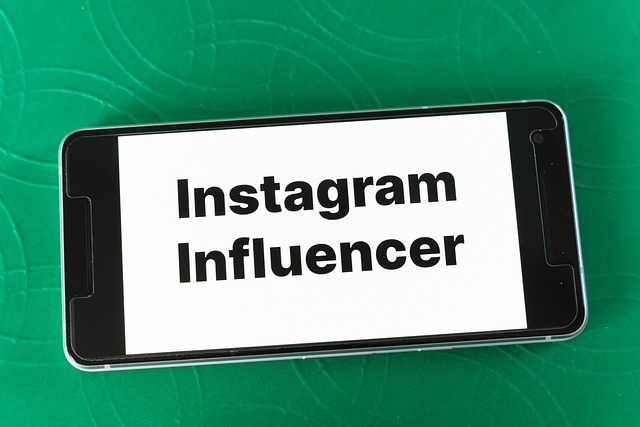In the digital age, brand visibility has evolved from simply being seen to being actively engaged with. Consumers now turn to social media platforms for recommendations, product insights, and authentic stories. Influencer marketing has become the bridge that connects brands to audiences in a way that feels personal and trustworthy. By leveraging influencers’ reach and credibility, brands can amplify their presence, deepen relationships, and drive measurable results.
The Growing Influence of Social Media
Social media platforms—Instagram, TikTok, YouTube, Twitter, and emerging spaces like Clubhouse and Discord—host billions of users daily. Each platform offers unique content formats: short videos, reels, live streams, stories, and text threads. The convergence of high engagement, visual storytelling, and algorithmic amplification has made these channels the go-to destinations for brand discovery.
Brands that ignore social media risk falling behind competitors that do. Yet, the sheer volume of content can drown even the most creative messages. This is where influencer partnerships shine: they provide a curated voice, a loyal following, and an authentic context for brand visibility.
Why Influencers Matter for Brand Visibility
Influencers are trusted voices within niche communities. Their followers often view them as peers or aspirational figures rather than marketers. This trust translates into higher conversion rates and stronger brand recall. Key benefits include:
- Credibility: Recommendations from a trusted creator carry more weight than traditional ads.
- Targeted Reach: Influencers often cater to specific demographics, enabling brands to reach the exact audience they desire.
- Content Agility: Creators produce real‑time, trend‑aligned content that keeps brands relevant.
- Cross‑Platform Presence: Many influencers maintain multiple accounts, allowing a single partnership to span several channels.
- Data-Driven Insight: Influencer campaigns provide granular engagement metrics that inform broader strategy.
Collectively, these factors accelerate brand visibility by creating organic, shareable moments that resonate with audiences.
Authenticity as the Cornerstone
Authenticity has become the currency of social media. Audiences can quickly spot forced or over‑produced content. Brands that partner with influencers who genuinely align with their values experience smoother integration and more authentic storytelling.
“When a creator loves the product, their enthusiasm becomes contagious. That emotional connection drives higher engagement than any paid placement could.”
Choosing the Right Influencer for Brand Visibility
Success hinges on matching the influencer’s persona and audience with the brand’s goals. Consider these factors:
- Audience Fit: Look beyond follower counts. Examine age, gender, location, interests, and purchasing behavior. Tools like audience demographics reports help refine the selection.
- Engagement Rate: A high number of likes or comments relative to follower count indicates genuine interaction and influence.
- Content Style: Does the creator’s aesthetic, tone, and storytelling approach match the brand’s voice?
- Authentic History: Review past collaborations. Influencers who only accept high-paying deals may risk perceived inauthenticity.
- Platform Relevance: Different platforms serve different content needs. For example, TikTok is ideal for viral short videos, whereas YouTube supports in‑depth reviews.
By applying these criteria, brands can build partnerships that genuinely elevate visibility rather than create fleeting spikes.
Macro vs. Micro: Deciding on Scale
Macro influencers—those with millions of followers—offer vast reach but often come with higher costs and a risk of diluted messaging. Micro‑influencers, with audiences ranging from 10,000 to 100,000, deliver niche engagement and a higher perceived authenticity. A balanced approach that mixes both can maximize visibility while maintaining credibility.
Content Strategies to Maximize Brand Visibility
Once the right influencer is onboard, crafting compelling content is the next step. Effective strategies include:
- Storytelling Campaigns: Narratives that weave the brand into real-life scenarios resonate more than product lists. Creators can share personal journeys that highlight how the product fits into their daily routine.
- UGC (User‑Generated Content) Loops: Encourage followers to create content featuring the brand. This amplifies reach and builds community trust.
- Hashtag Challenges: Launch branded challenges that invite user participation, especially on TikTok and Instagram. A catchy, easy-to-remember hashtag boosts discoverability.
- Live Shopping Events: Combining live streaming with direct purchase links creates immediate engagement and conversion.
- Cross‑Channel Playbooks: Repurpose content across platforms—short clips for reels, longer reviews for YouTube—to maintain momentum and reach diverse audience segments.
Leveraging Story Features
Stories, with their transient nature, are perfect for time‑sensitive announcements, behind‑the‑scenes glimpses, or limited‑time offers. By embedding interactive stickers like polls or countdowns, brands can further drive engagement and create urgency, reinforcing brand visibility.
Measurement and Analytics: Tracking the Impact on Brand Visibility
Data is essential to validate the effectiveness of influencer campaigns. Key metrics include:
- Reach and Impressions: The number of unique users exposed to the content.
- Engagement Rate: Likes, comments, shares, and saves relative to reach.
- Conversion Metrics: Click‑through rates, coupon code usage, or direct sales attributed to the influencer.
- Sentiment Analysis: Positive, neutral, or negative reactions measured through comment tone.
- Share of Voice: Comparing brand mentions against competitors.
Advanced attribution models—first‑touch, last‑touch, or multi‑touch—help assign credit across the customer journey, clarifying how influencer touchpoints influence awareness and purchase intent.
Feedback Loops and Optimization
Regular review of performance data allows brands to tweak creative elements, adjust targeting, or shift to different influencers. A continuous optimization cycle ensures sustained growth in brand visibility.
Common Pitfalls and How to Avoid Them
While influencer marketing offers significant upside, missteps can erode trust and diminish brand visibility. Watch for:
- Misaligned Messaging: Ensure that the influencer’s style aligns with the brand’s tone; inconsistent messaging confuses audiences.
- Inadequate Disclosure: Failure to comply with FTC guidelines damages credibility. Always include clear, visible disclosure statements.
- Over‑Commercialization: Heavy product placement can feel pushy. Blend storytelling with subtle product cues.
- Ignoring Audience Feedback: If followers express skepticism or negative sentiment, respond promptly and adjust strategy.
- Short‑Term Focus: Building long‑term relationships with influencers fosters deeper engagement and sustainable visibility.
Case Study Snapshot
Consider a mid‑size athletic apparel brand that partnered with a micro‑influencer on TikTok. By creating a workout challenge featuring the new line of leggings, the brand saw a 30% lift in search queries, a 25% increase in website traffic, and a 10% spike in sales during the campaign window—demonstrating a clear link between influencer content and enhanced brand visibility.
The Future of Influencer-Driven Brand Visibility
Emerging trends point to a more nuanced and integrated approach:
- Creator Platforms: Dedicated marketplaces streamline discovery, contract, and payment processes, making collaboration more efficient.
- AI‑Generated Content: Brands increasingly use AI tools to generate creative assets, which creators then personalize for authenticity.
- Long‑Form Video Dominance: Platforms like YouTube and TikTok are embracing longer videos, offering deeper storytelling opportunities.
- Decentralized Influencer Networks: Blockchain‑based communities reward creators with tokens, fostering loyalty and reducing influencer fatigue.
- Data Privacy and Transparency: Growing regulatory scrutiny emphasizes the need for transparent data practices and honest disclosures.
Brands that stay ahead of these shifts can maintain and grow their brand visibility in an increasingly crowded digital landscape.
Building Resilience in Campaigns
By diversifying influencer portfolios, testing creative formats, and investing in community building, brands can reduce the risk of volatility and keep visibility steady even when platform algorithms change.
Final Thoughts on Influencer Power and Brand Visibility
Influencer marketing is no longer a niche tactic; it’s a central pillar of any robust digital strategy. When executed with intentionality—matching brand values to authentic voices, crafting engaging stories, and measuring impact—it propels brand visibility to new heights. The key lies in partnership, not promotion: brands must view influencers as collaborators who help craft meaningful narratives rather than mere channels for paid shout‑outs.
As social media continues to evolve, brands that listen to their audiences, embrace authenticity, and leverage the power of trusted creators will sustain visibility, foster loyalty, and ultimately drive growth.




